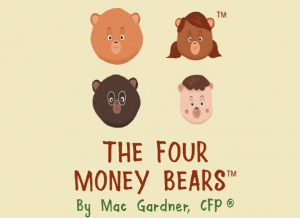
It begins with the first grocery trip.
Or sometimes, it’s when they want a new toy.
It would be the start of a long conversation about money, economics and how society works. But hey, before that, let’s first start them off with the age-old saying: “money doesn’t grow on trees”!
But what’s money? Where to spend money? How to earn money? Should your child have money when they’re young?
No matter what you’re here for, this article is going to tackle questions about your child’s early recognition of finances, and how they develop understanding as they grow up!
Why Should I Start Early With Teaching?
It’s okay to start small but it’s best to do it as soon as they’re literate, even as early as preschool! Here are a few reasons why!
A Society With More Exposure to Online Transactions

[Freepik]
You see, our society has become more and more integrated with finances online, and your child will inevitably be connected digitally in some form.
E-commerce, paid apps, subscriptions of digital services. Many conveniences in life today are paywalled and have easy conversion processes that lead to a payment page. Indeed, the average child has become more exposed to such transactions, making it more important for them to understand what’s flashing on their screens!
Cultivating Good Money Habits

[Freepik]
“By age 3, your kids can grasp basic money concepts. By age 7, many of their money habits are already set.” says a PBS writer.
Between reckless spending, clicking on things without awareness that it costs money, or simply just to impart the value of money that “daddy and mummy” is earning for the family, these are all invaluable life lessons to be taught!
Building Foundations While Learning

[Freepik]
In addition, your child’s cognitive abilities and understanding of financial concepts should be developed over time. They are built upon previous ideas, and allow your child to better grasp how each concept connects to each other. This is best achieved when they are learning about money naturally, every step of the way!
For example, the idea of paying for goods would require the understanding of coins and notes. And paper notes would lead to the explanation of a bank. A bank would then become the gateway to teach them about a bank account and its various services.
How Do I Get My Child Involved With the Learning Process?

[Freepik]
Don’t rush the learning process! Begin with money values.
Just like virtues you would teach your child as they grow up as a sensible adult, share the money priorities of the household, and the importance of hard-earned money. Yes, you could buy them all the latest toys, but is it a good use of that money?
When you bring the real lessons to your child however, it’s best to teach with practicality. What does that mean?
Introducing Real-Life Scenarios

[Freepik]
Children will learn best as opportunities surface where money is involved, whether directly or indirectly. As a way to quickly engage your child with such interactions, try bringing them along on your grocery trips, or perhaps your way to the bank.
Or it can also be as simple as explaining how equivalent exchange works when you show them the act of paying for food!
Using Cash to Pay

Well, give them actual cash to work with! A higher denominator value like a $50 would most definitely introduce the concept of returning change. Cash tells kids that money is finite, and that makes them even more careful with it.
What Should I Teach First?
The entire process of educating a child with finances is definitely a long one, but you don’t have to cram it into a single lesson!
For starters, let’s bring the concept of “what to do with money” to your child. All too often, children associate money with spending, when really there are many ways for them to use it in life!
“You can spend it, save it, invest it or give it away,”
Concepts about disposable income, bank interest, investments and charities follow. Answering each decision carefully, you can allow your child to understand and explore how money is used by everyone, and why people choose to do one over the other!
Beginner Level: Using Visual Aids to Tell a Story

Children learn best with visual mediums, so what say you get yourself something on paperback and tell them a bedtime story?
“The Four Money Bears: Berryville” is one of many kid-oriented storybooks that introduces the early levels of money sensibilities to your child!
Intermediate Level: Using Gamification to Understand Concepts

Games are aplenty for those who learn better with games and clicks, as the importance of culminating early money values is a very competitive market! You’ll find yourself with plenty of titles for your child to choose, as they double up as practice on money management!
The author of “Four Money Bears” has created one such game, aiming to introduce “FUNancial Literacy” with three goals in mind:
- Experience the process of entrepreneurship.
- Understand the four basic functions of money.
- Have fun learning while developing healthy financial habits.
Advanced Level: Giving Your Child an Allowance

When your child is ready, you can start giving them an allowance! With this, your child has finally reached a level of independence where they can think about what to do with that money.
Are they spending it immediately? Or do they see the benefits of responsible budgeting, and even saving? Approach this step by following up with age-appropriate conversations.
But whether you’re speaking with a six-year-old or a teenager, the fundamental goal remains consistent: remember to teach your child the distinction between needs and wants!
Leading By Example

[Freepik]
Finally, and as with many things, parents can significantly influence their children by leading through their own actions. Practice what you preach!
These financial values that you want to teach only hold value when they’re being exercised by their role models: YOU! So don’t ever send conflicting messages that would put doubts in these little ones!
By demonstrating responsible money management, such as budgeting, saving, and making informed spending choices, you as a parent can instill valuable financial habits in your child.
Immerse them with practical, real-life examples. In this way, they are able to emulate, reinforce the lessons they receive about money management.
